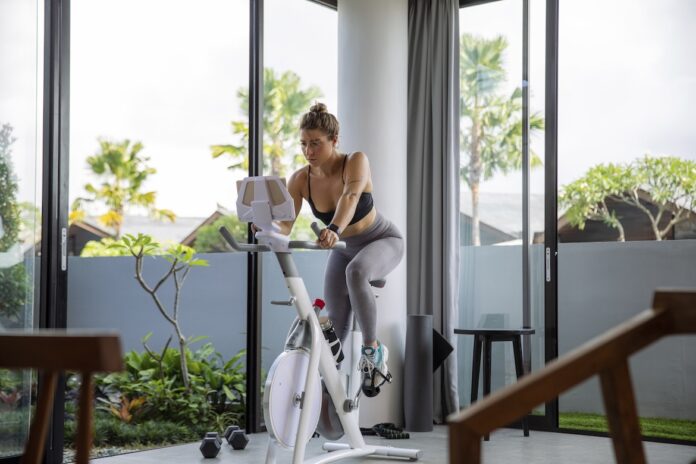We spoke to licensed private coach and biking coach Joseph David, ISSA-CPT, a Life Time group health and biking teacher in New York and New Jersey, to search out out if a biking class is sufficient to work your legs and find out how to make indoor biking much more of a lower-body burn.
Which muscle tissues does biking work?
Biking does, in fact, work your leg muscle tissues. These pedals received’t transfer themselves, in spite of everything! You possibly can anticipate to work your quads (the muscle tissues on the fronts of your thighs), your glutes (the muscle tissues of your butt), and your calves (the muscle tissues on the backs of your decrease legs), David says.
“As you carry your leg out of your core, you’re going to work your quads, and as you press down on the pedal, you’re firing up your glutes,” he says. In the event you’re sporting biking footwear that strap into the pedals, you additionally work your hamstrings extra once you pull up in your pedal stroke, in keeping with the Arthritis Basis.
Further bonus: Indoor biking additionally works your abs: “Your core is engaged the complete class,” David provides.
“The true star of the present right here is including the resistance on a motorbike.” —Joseph David, ISSA-CPT
How does biking examine to resistance coaching?
However regardless that biking strengthens your leg muscle tissues, focused lower-body energy workouts — say, squats and deadlifts — are going to have a much bigger impact when you’re actually trying to construct muscle.
In keeping with a March 2015 evaluate1 in Acta Physiologica Hungarica, biking does improve leg muscle measurement, however any seen adjustments occur extra slowly than the expansion you’d discover from conventional energy coaching exercises.
Plus, indoor biking is linear; it solely includes shifting in a single airplane. Decrease-body strikes like lateral lunges and lateral step-ups work your leg muscle tissues in several planes of movement, which helps construct balanced energy by working completely different muscle tissues in several methods, in keeping with USA Biking.
In the event you actually need to construct leg muscle rapidly, it’ll assist so as to add some lower-body energy days to your exercise routine. However have in mind these classes will probably make you a greater bicycle owner over time, in keeping with a March 2021 examine2 within the Journal of Practical Morphology and Kinesiology.
And vice versa: Your biking may also assist your energy coaching, David says. Pedaling your legs loosens up your hips and fires up your glutes, which means you is likely to be extra snug shifting by way of your full vary of movement on days once you’re lifting weights, he says.
Will biking alone strengthen your legs?
You completely will construct some leg energy from solely doing biking and no energy coaching. If that’s your plan, ensure you’re driving with resistance. “The true star of the present right here is including the resistance on a motorbike,” David says. Your muscle tissues must work more durable to show the pedals and can adapt and develop stronger within the course of. “I wish to say hustle to get the muscle.”
You may additionally need to keep seated within the saddle to pedal relatively than standing up on the bike. Whenever you rise up, you’re utilizing extra of your individual physique weight to push towards the resistance on the pedals, David says. Sitting down isolates your legs extra and will make them stronger over time.
Purpose to take an indoor biking class at the very least 4 instances per week when you’re desirous to see outcomes, he says. That leaves time for separate strength-training exercises, when you resolve to carry weights. If not, you may even be capable to cycle six instances per week to essentially maintain your self constant and on the trail to progress, he says.
In the event you’re actually in search of a problem and also you’re an skilled exerciser already, experiment with doing a little lower-body energy coaching earlier than an indoor biking class. “It actually burns these legs out,” David says.
Irrespective of how you propose to train, if you wish to construct muscle and energy, you need to push your limits, David provides. Your exercises ought to really feel difficult and get even more durable over time as you develop extra snug, an idea referred to as progressive overload. “Even when it’s [picking up weights that are] one pound heavier, one pound is bigger than the final time you probably did it,” he says. “It’s about including the resistance slowly, sticking to it, and believing that you just’re already sturdy.”


